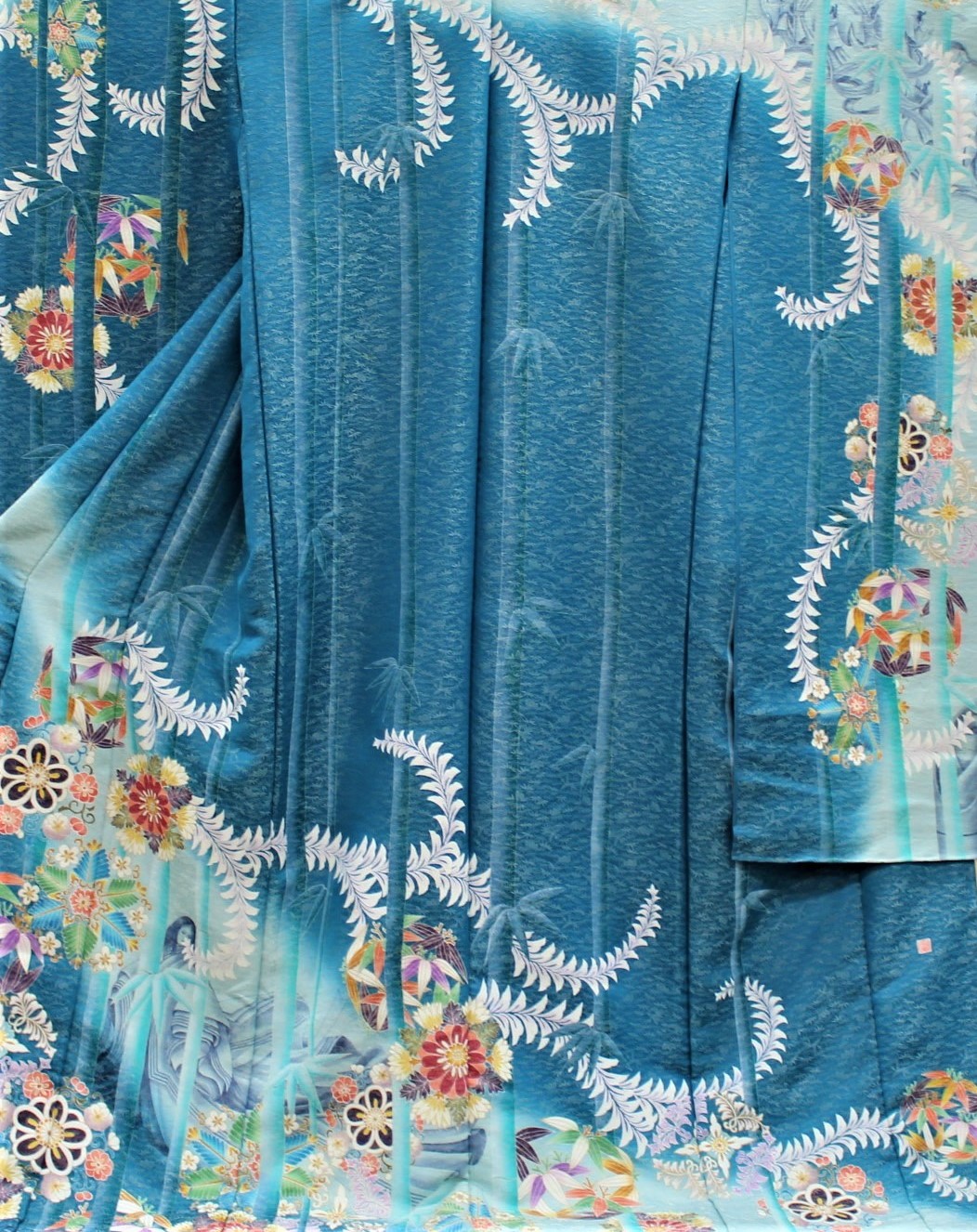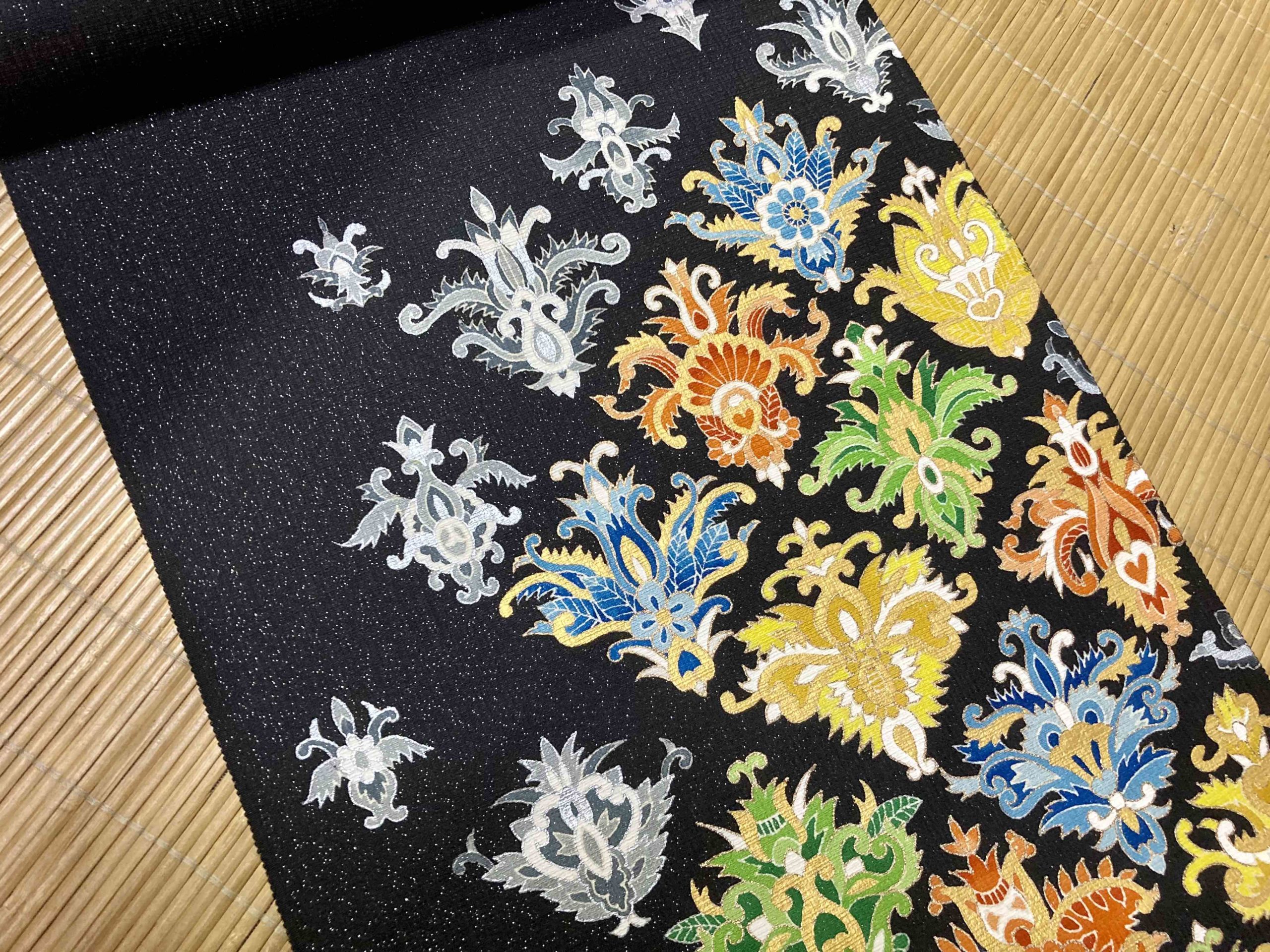東京手描友禅
Pronunciation: Tokyo Tegaki Yuzen
Production area: Tokyo
Tokyo Tegaki Yuzen refers to hand-painted Yuzen dyeing produced in Tokyo. Along with Kyo Yuzen and Kaga Yuzen, it is regarded as one of the three great Yuzen traditions of Japan, and is also called “Edo Yuzen.” Developed under the influence of the Edo period’s townspeople culture and its refined sense of wabi and sabi, it is characterized by subdued and restrained colors, in contrast to the brilliant multicolored style of Kyo Yuzen. Yuzen dyeing, which originated in Kyoto, spread first to Kaga and then to Edo (Tokyo), where it evolved into a distinct style shaped by the region’s history and culture. There are various theories about how it arrived in Edo: some say that between 1804 and 1829, as the cultural center shifted from Kyoto to Edo, local artisans learned and refined the techniques from official painters who had moved with their lords; others suggest that Yuzen artisans from Kyoto, invited by Keisho-in, introduced the craft. Because Edo was rooted in samurai culture, Edo Yuzen often featured simple designs with ample blank space and subdued tones. Influenced by the aesthetics of townspeople culture, Tokyo Tegaki Yuzen is known for landscape motifs such as “Pine on the Shore,” “Fishing Boat,” “Drying Nets,” “Plovers,” and “Reeds.” In recent years, however, more modern and contemporary patterns have also been created. It was designated a Traditional Craft by the Ministry of Economy, Trade and Industry in 1975.
See Also: Traditional Craftsmanship Vol.2 “Tokyo Tegaki Yuzen | Artisan Mr. Susumu Iwama”


Photo courtesy of.



















